
In General
Getting Here
Map
Sights
Pictures
Floobydust
RAILROAD SIGNALS HOME
Location / Name:
Guelph ON
What's Here:
GO/VIA Train Station
the Guelph Junction Railway
CN Steam Engine #6167
Long single track bridge
Data
GPS Coordinates: 43.544582, -80.247016 (at the Station)
A/C: 519
ZIP: N1H 3A4
Access by train/transit:
 and
and

The Scoop:
It appears that Guelph has a fair number of railfan oriented things, if you're in the vicinity. You have the GO/VIA station, ex CN steamer #6167 on display (somewhere - they moved it), a pretty nice long bridge going over vehicular traffic and water, a couple of wyes, and last but not least, the western end of operations for the Guelph Junction Rwy, owned by the Ontario Southland Rwy. I'm sure there's a few things I've missed by trying to do a guide by what I can see from the air, but I'm sure someone will let me know.
Acknowledgements:
None yet
Websites and other additional information sources of interest for the area:
www.viarail.ca/Canada
http://www.gotransit.com/publicroot/en/default.aspx
There are many ways to get here, depending on where you are coming from. The wide area map below will give you some idea. For those of you getting here by GPS, the coordinates at the station are: 43.544582,-80.247016.
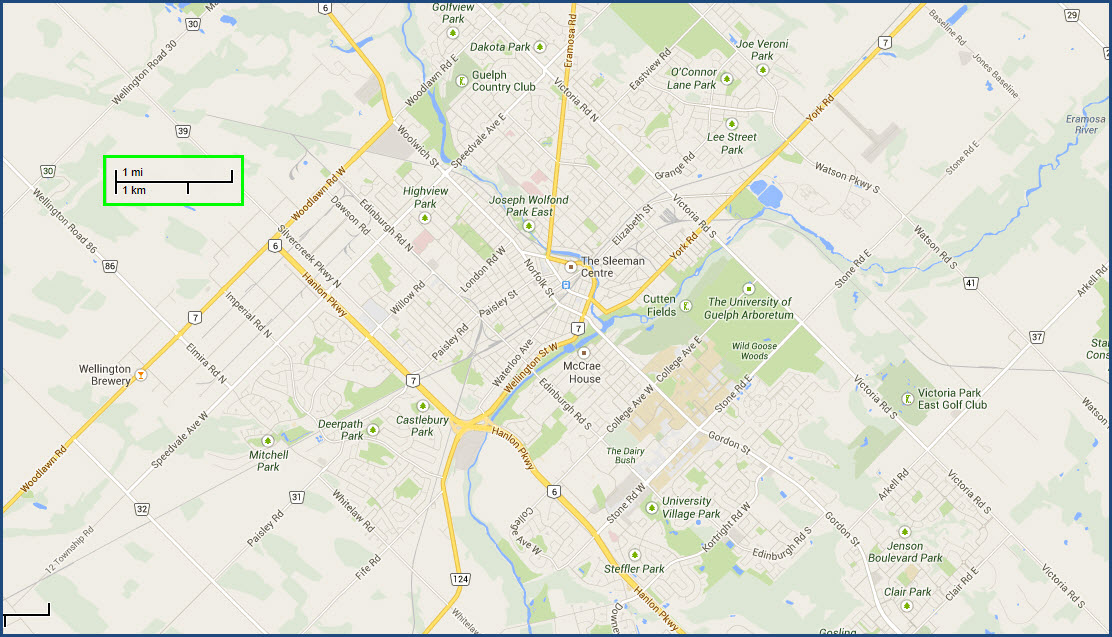
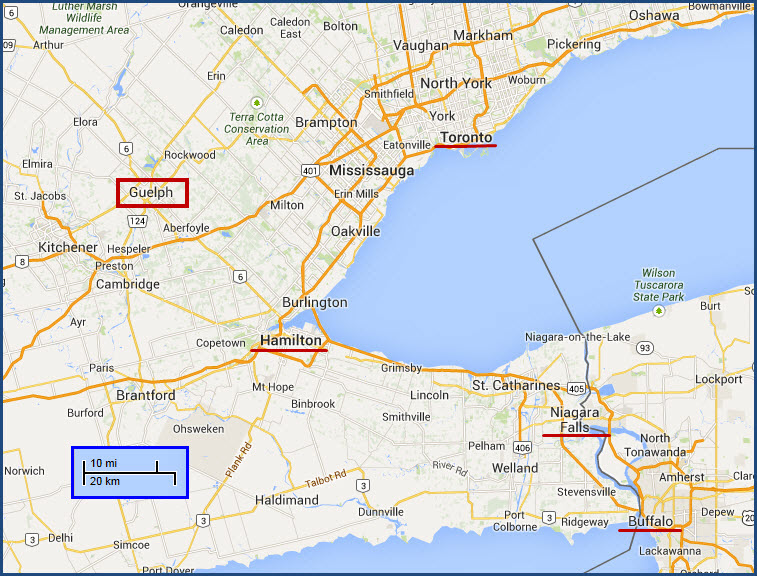
![]() Guelph Central Station - GO/VIA
Guelph Central Station - GO/VIA
Address: Guelph Railway Station, 79 Carden St; Guelph, ON N1H 3A4, Canada. For train information, check out www.viarail.ca and www.gotransit.com
General Information
Guelph Central Station (also known as Guelph Central GO Station) is the main inter-modal transportation terminal in Guelph ON. It serves Guelph Transit, Via Rail, GO Transit, Greyhound Canada and Aboutown Bus Service. It became fully operational in May 2012.
It is located at 79 Carden Street where the current Via Rail railway station is and running along Carden Street to where the former Guelph Bus Terminal was at 141 Macdonell Street. The name was chosen with input from the community and all the transit service providers using the new station
Original Railway Station
Built in 1911, the Guelph railway station is a classic example of early 20th Century Canadian railway station design and has been designated as a heritage structure per the Heritage Railway Stations Protection Act. As of October 2012, VIA Rail no longer staffs the station. The facility is wheelchair-accessible.
Intermodal Terminal
The Intermodal Transit Terminal was first proposed in 2002. A feasibility study was initiated in 2004, and Guelph City Council endorsed the Carden Street location and the concept design that same year. The project received federal and provincial infrastructure stimulus funding in 2009, and detailed design and stakeholder consultations were conducted. Construction began in April 2010.
The station opened to the public on May 13, 2012. The project will cost $8 million for which $5.3 million was from the Provincial and Federal Infrastructure Stimulus Funds.
The opening of the bus portion of the station was delayed from October 2011 to May 2012 to allow time for the renovations of the railway station building to be completed.
My standard Wikipedia Disclaimer: most of the info above came from Wikipedia, as such, not all of it may be correct.
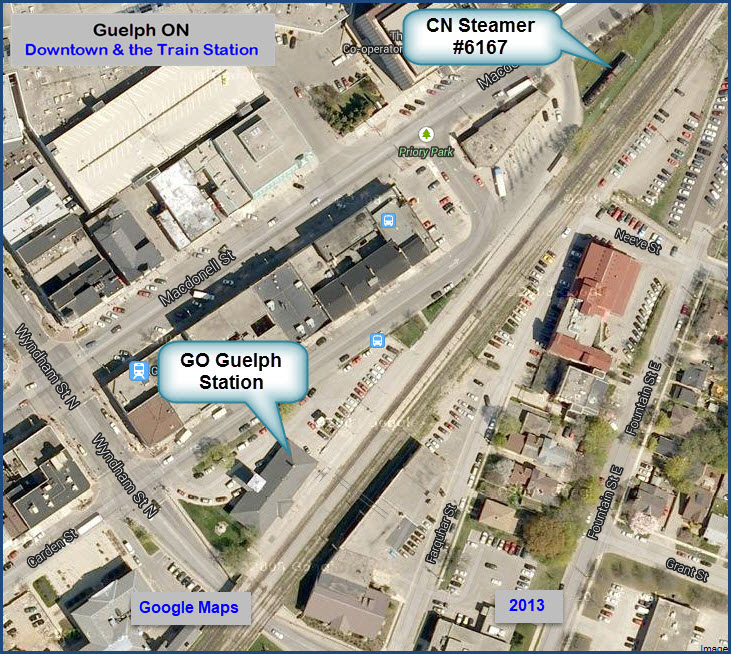
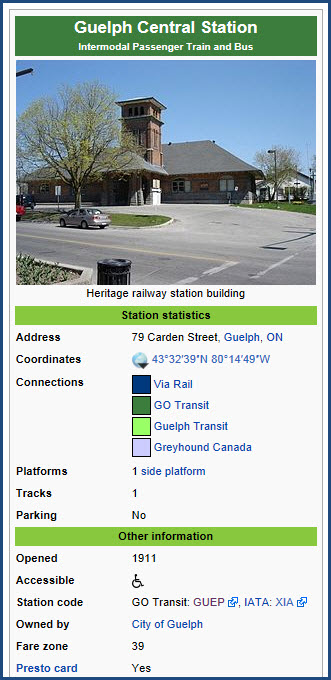
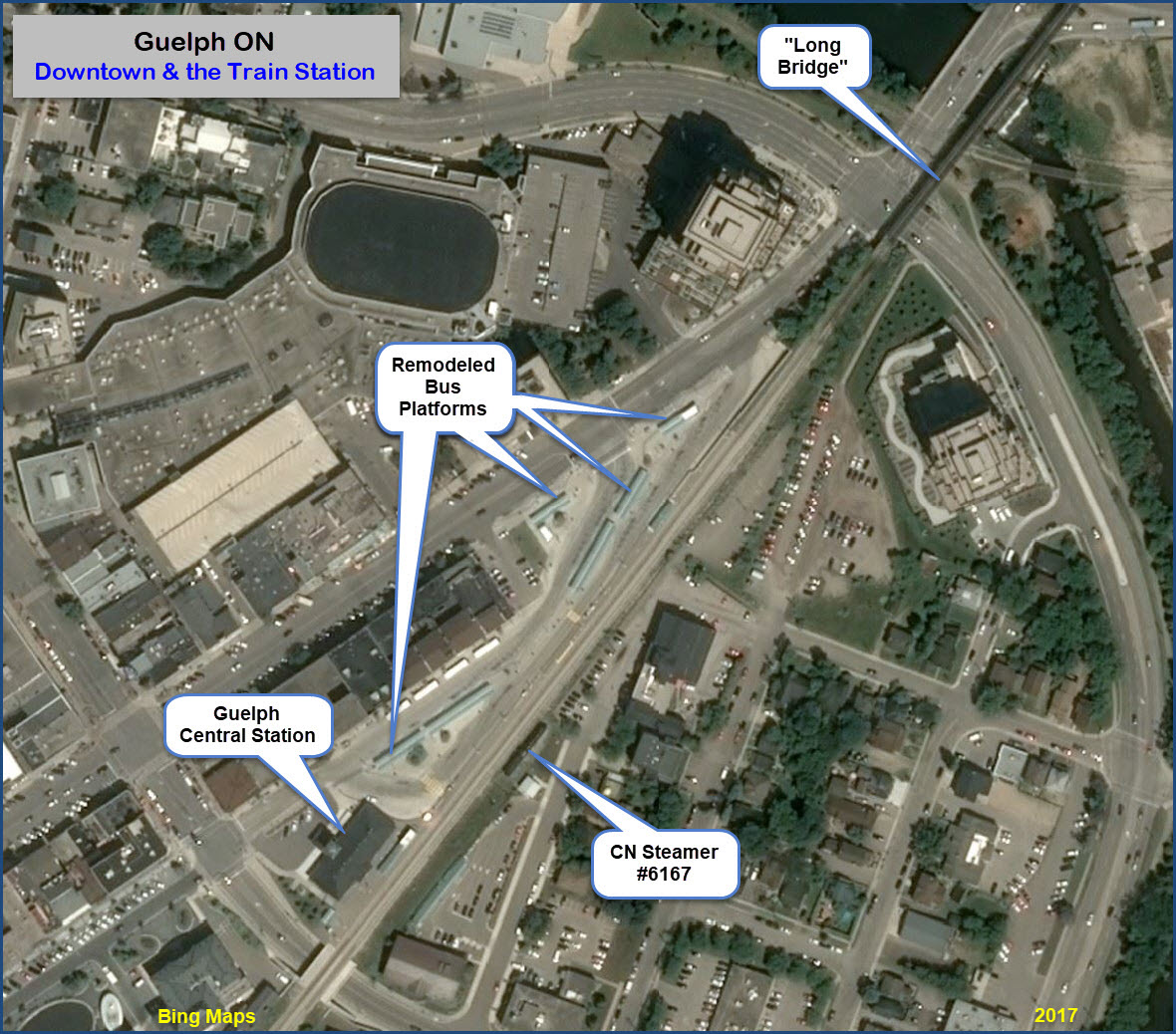
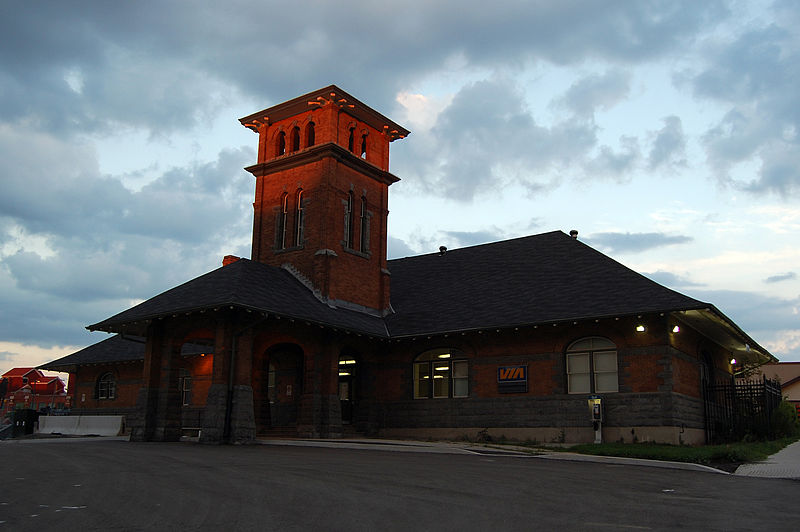
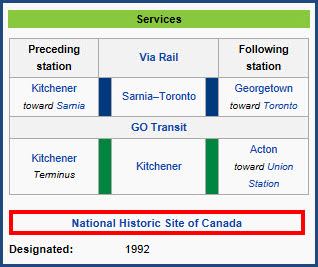
Above photo from Wikipedia, taken by Milan Suvajac, 2011
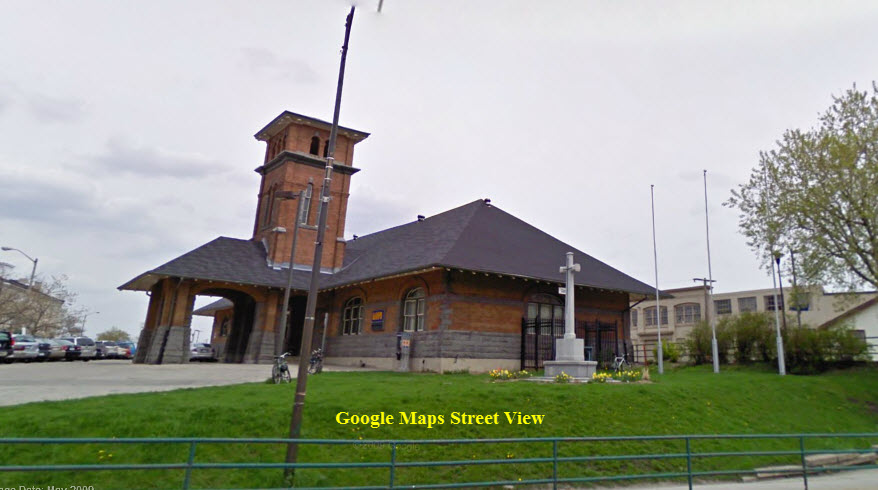
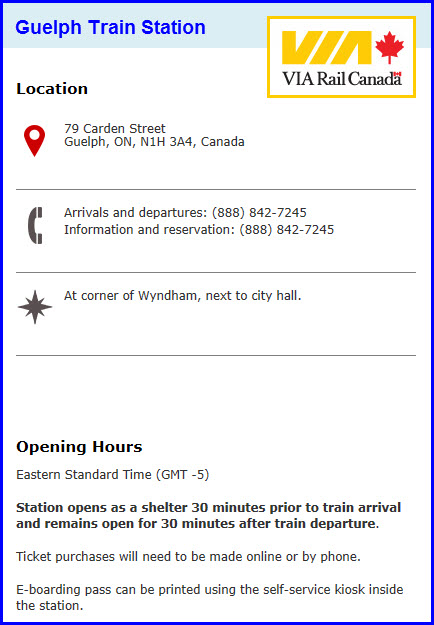
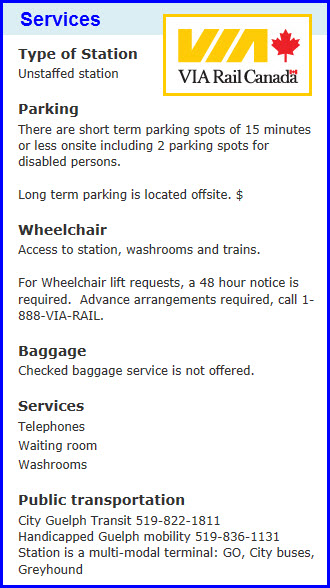
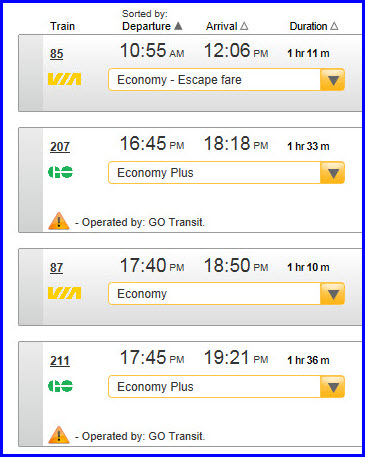
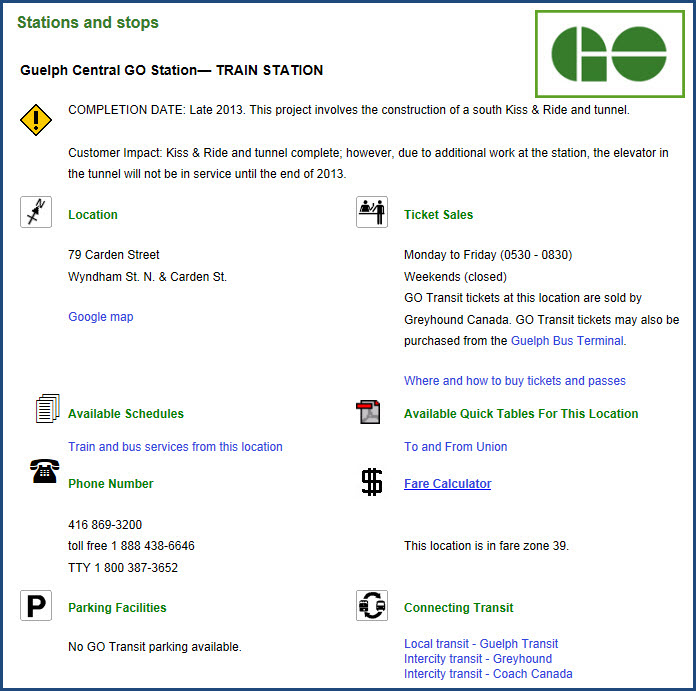
![]() CN Steam Engine #6167
CN Steam Engine #6167
After being stored at CNR's Spadina Roundhouse in Toronto for three years following her last excursion on September 27, 1964, CNR 6167 final resting place was decided. Many of the towns 6167 had visited during her years as an excursion engine had hoped to acquire the locomotive. The fact that 6167 has '67' in her number made her even more sought after owing to Canada's Centennial year - 1967. At that time, every city and town in Canada set out to engage in various "Centennial Projects" to commemorate Canada's one-hundredth birthday, and many towns thought that a locomotive bearing the digits "67" would be neat to have. After three years of searching, an agreement was finally made between the CNR and the City Of Guelph on June 30, 1964 (Clegg 1969, 58).
The Guelph Mercury reported that on September 26, 1967 (three years to the day of her second last run with 6218), 6167 was moved to her final resting place. The article also mentioned that CNR V.P. Douglas V. Gonder would be present for a dedication on October 12, 1967.
The Canadian National steam locomotive 6167 was put on its permanent bed east of the CNR station today after arriving in Guelph over the weekend. Donated to Guelph by the CNR, the train will provide an outstanding tourist attraction, and many visitors are expected to travel to Guelph to view this huge locomotive and take photographs. The engine is facing west, so it appears to be entering the city, and it can be easily seen from Wyndham St. and city hall. Steam locomotive 6167 was donated to Guelph through the efforts of Mayor Ralph smith and the Guelph Junction Railway, and with the co-operation of Douglas Gonder, CNR vice-president. Mr. Gonder is expected to officially dedicate the locomotive around Oct.12. (Guelph Mercury September 26, 1967)
More info here and here and here
This is from the Transit Toronto blog:In the 1940s and 50s, Canadian National Railways locomotive 6167 regularly rolled through Guelph, pulling CN trains between Ontario and Eastern Canada.
This week, it’s rolling through Guelph again. The steam locomotive, one of the last of of its type in Canada, will travel from its current home to its final resting place, about 200 metres (600 feet) south.
Since 1967, 6167 has been idle, resting beside the Greyhound Canada bus terminal and nearby VIA Rail station on Carden Street in downtown Guelph.
Now the City of Guelph is moving the loco so it can start its upcoming project to build a new downtown transit terminal beside the VIA station. Later this year, GO Transit, Guelph Transit and Greyhound buses will be stopping at the exact spot where 6167 currently stands. (The City also expects that GO trains heading to and from Kitchener will be stopping at the station sometime next year.)
The City recently awarded a $275,000 contract to a railway contractor to plan the steam locomotive’s final trip.
On Monday, June 14, the City is closing Carden Street to all traffic, so the contractor can prepare for the move. (GO and Greyhound buses will pick up and drop off passengers at a temporary stop on the north side of Macdonell Street.)
On Tuesday, June 15, cranes will lift the loco straight up and then workers will roll a flatbed beneath it. The next day, Wednesday, June 16, they’ll haul the flatbed over a temporary steel-plated road the City built over the tracks to get the locomotive to the other side, where they’ll place it on a concrete pad. Later on Wednesday, the City will re-open Carden Street and buses will return to the Greyhound terminal.
The City originally planned to move the locomotive to a small, triangular piece of land it owned on Farquhar Street. However, it decided, instead, to move it to vacant land that’s a bit closer to the tracks and the future site of GO’s south-side train platform.
Earlier this month, Guelph City Council agreed to lease a 310-square-metre lot south of the tracks from the Goderich - Exeter Railway Company for about $850 each year. The City will build a concrete pad on the property to hold the 300-tonne 683,000-pound) locomotive.
CN built steam 6167 in its Montreal Locomotive Works in 1940, one of 203 “Northern” type locomotives that Canadian National used to move goods, products and people to Canada’s east-coast ports during the national emergency of World War II. The engine made countless trips through Guelph to the Maritime Provinces and back and shuttled soldiers, sailors and airmen to and from Halifax.
It spent most of its active life hauling 12-car passenger or 80-car freight trains at speeds of as much as 137 to 161 kilometres per hours 85 - 100 miles per hour) in the area of Moncton, New Brunswick. Eventually, it logged about about 2 million kilometres 1,250,000 miles) of regular service.
In 1943, the locomotive collided head-on with another Northern locomotive, 6166, killing the engineer of 6166 and both firemen. In spite of extensive damage, CN rebuilt the engine and put it back into service, because Canada urgently needed as many locomotives as possible to support its wartime efforts.
It was less than 20 years old when CN finished converting its entire fleet to diesel engines in 1959. However, CN chose 6167 for special excursion trips between 1960 and 1964, when it carried about 40,000 passengers and became Canada’s “most photographed locomotive”. In September of 1964, CN took 6167 out of service and stored it in Toronto. CN donated the locomotive to the city in 1967 and placed it just east of the station to help Guelph celebrate Canada’s centennial.
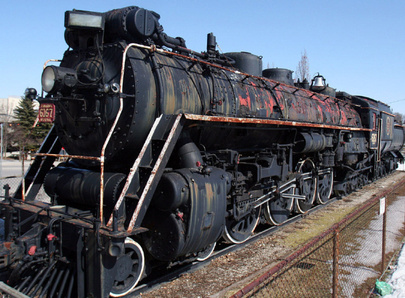
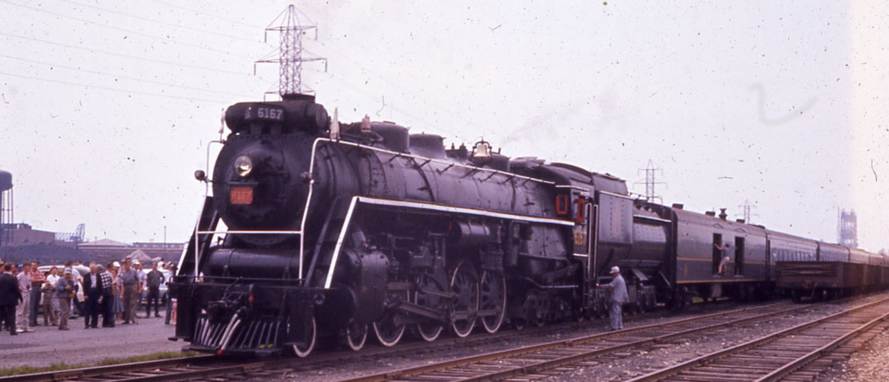
CNR 6167 at Port Colborne, July 10, 1960. Stan Svihla Photo, Jim Parker Collection.
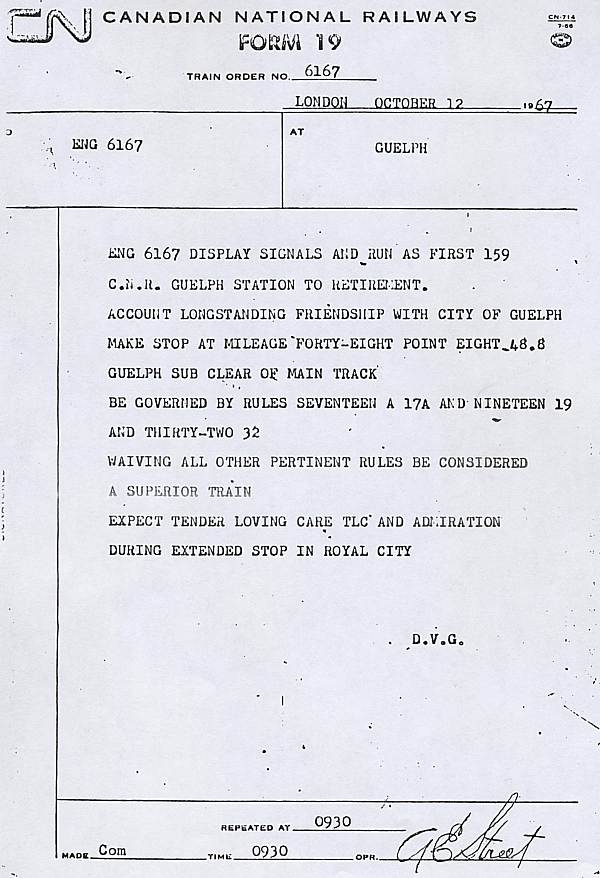
GPS Coordinates: 43.537715,-80.258378 (at S Edinburgh Rd)
The two yards situated in the middle of the wye do not appear to be very used. Each of the three ends has good sight lines from Edinburgh Rd and Alma St.
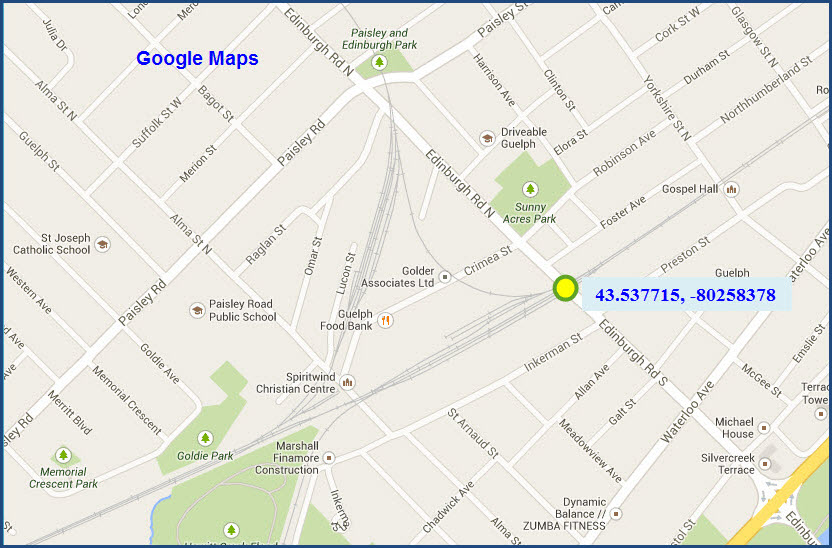
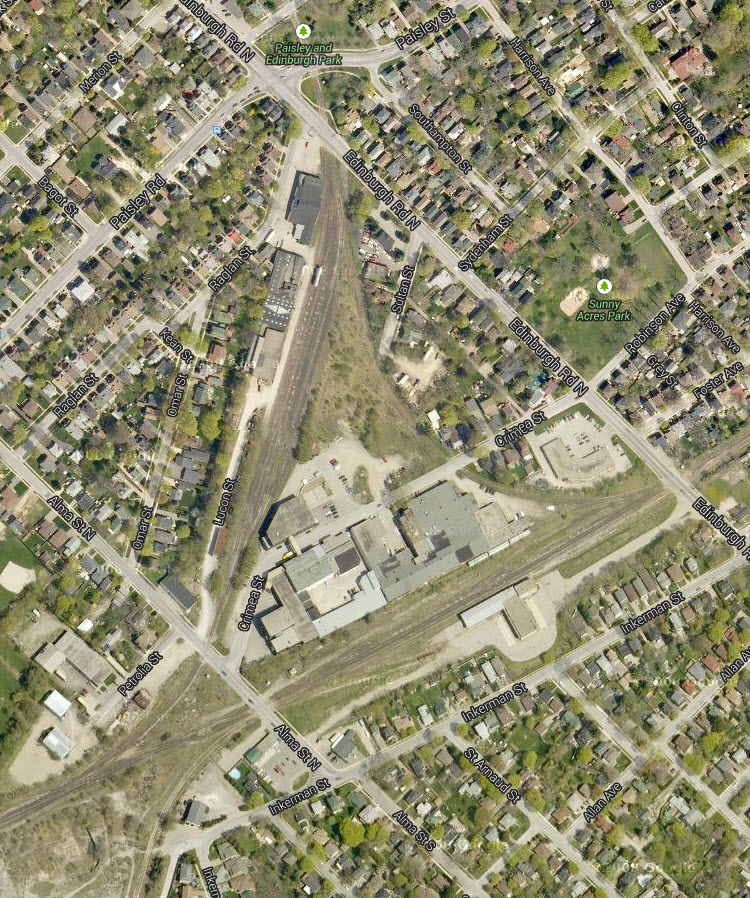
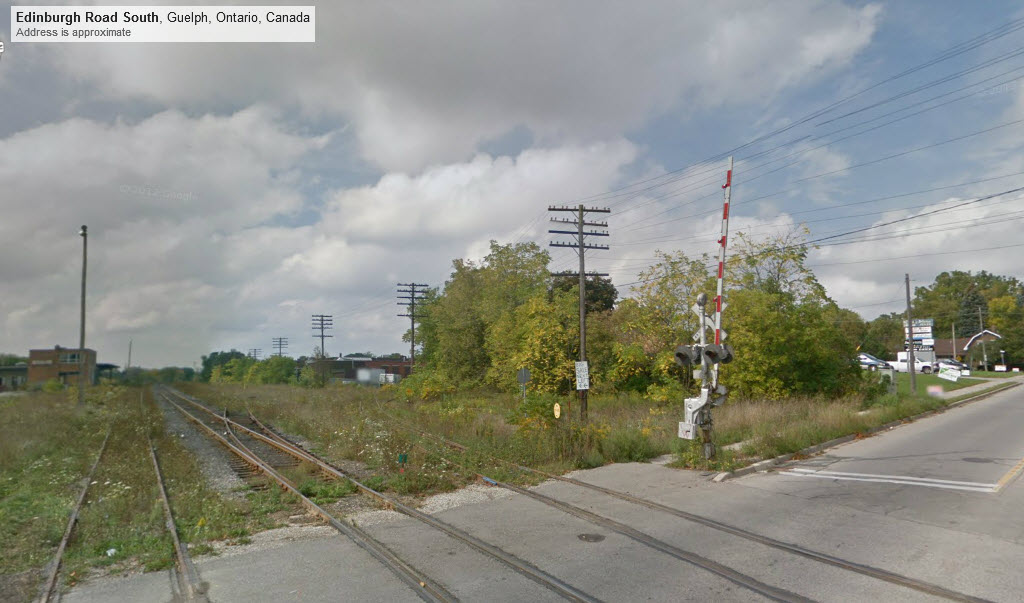
Crossing Edinburgh Rd, south leg of the wye
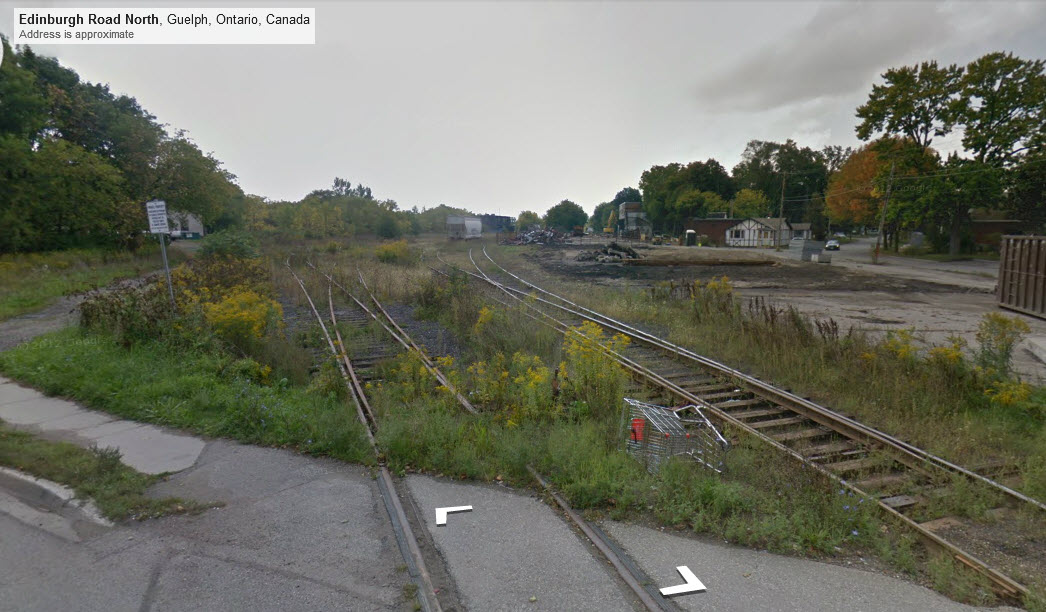
Crossing Edinburgh Rd, north leg of the wye - looking west
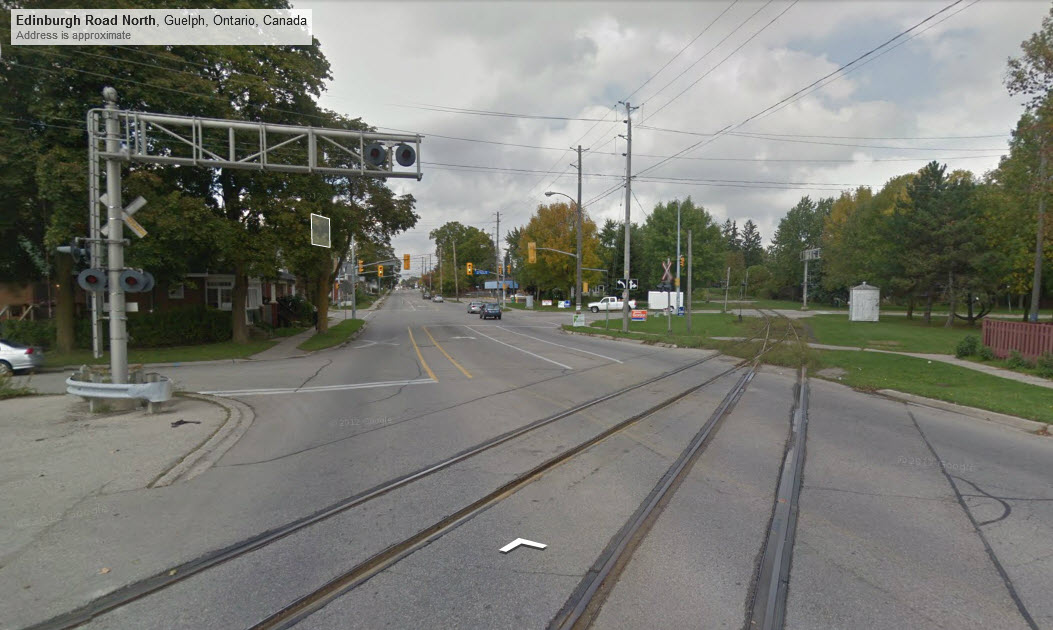
Crossing Edinburgh Rd, north leg of the wye - looking northeast
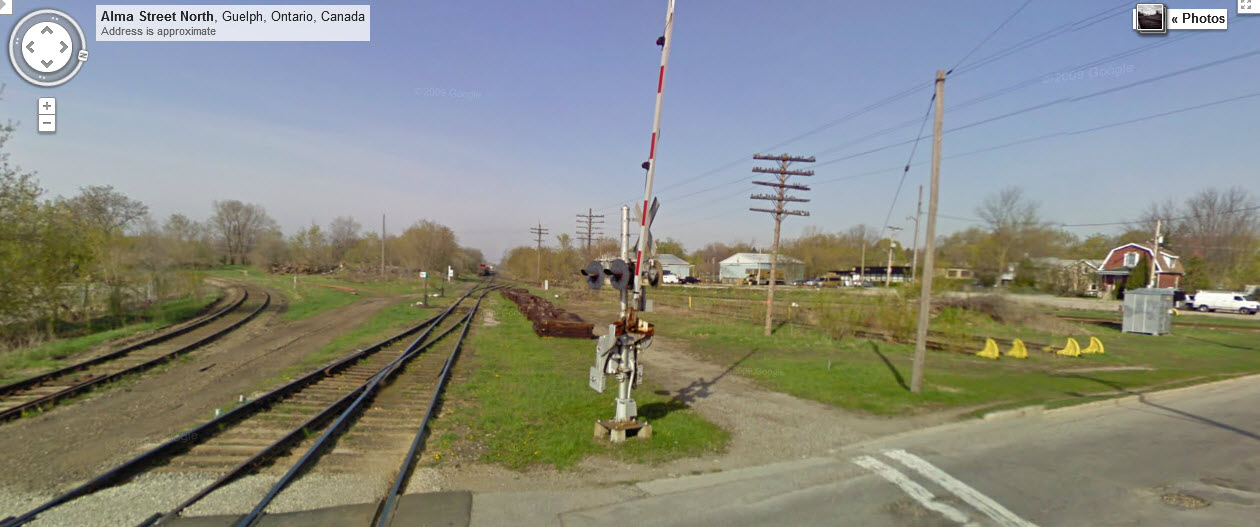
Crossing Alma Rd, west leg of the wye, southern of the two crossings - looking west
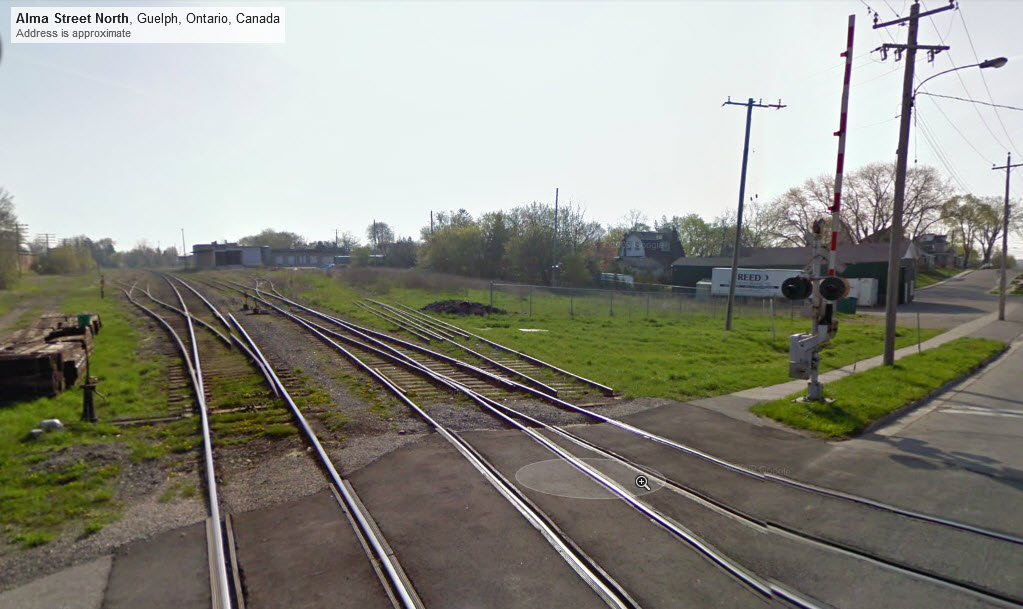
Crossing Alma Rd, west leg of the wye, southern of the two crossings - looking east
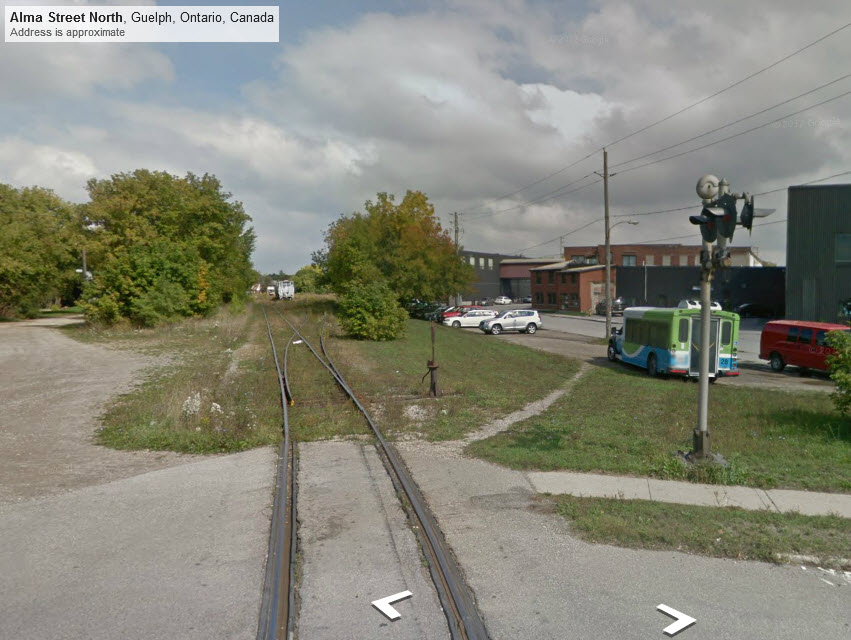
Crossing Alma Rd, west leg of the wye, northern of the two crossings - looking east
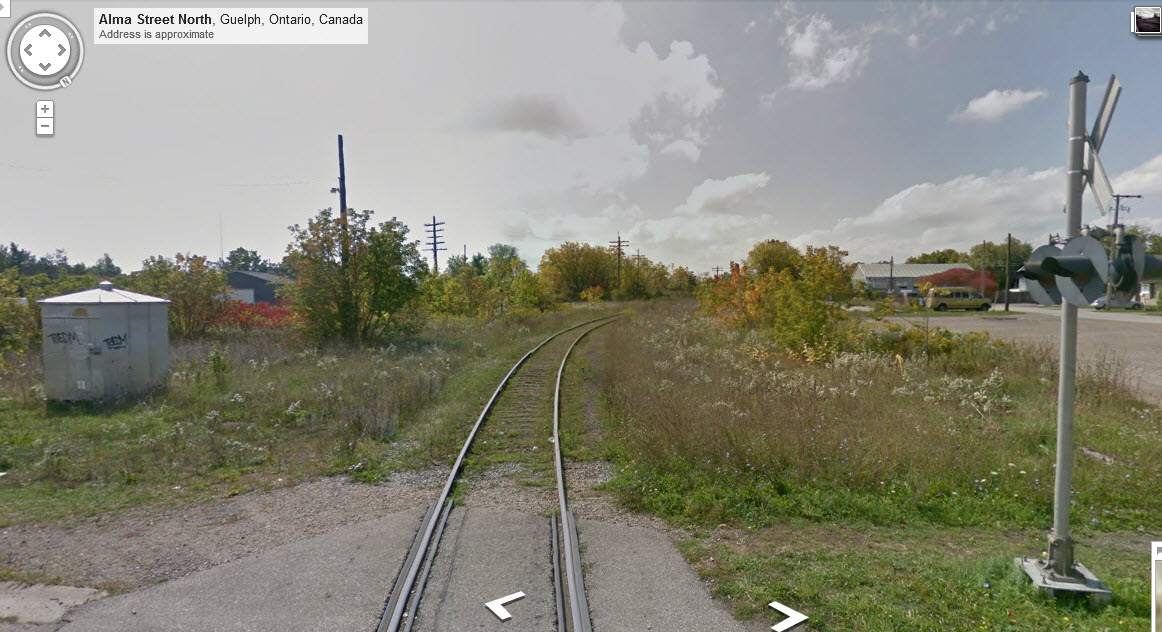
Crossing Alma Rd, west leg of the wye, northern of the two crossings - looking west
GPS Coordinates: 43.546861,-80.243953 (at the south end at Woolwich St)
Cool bridge! Single track - so this makes it easy to photograph from both sides depending on the sun....
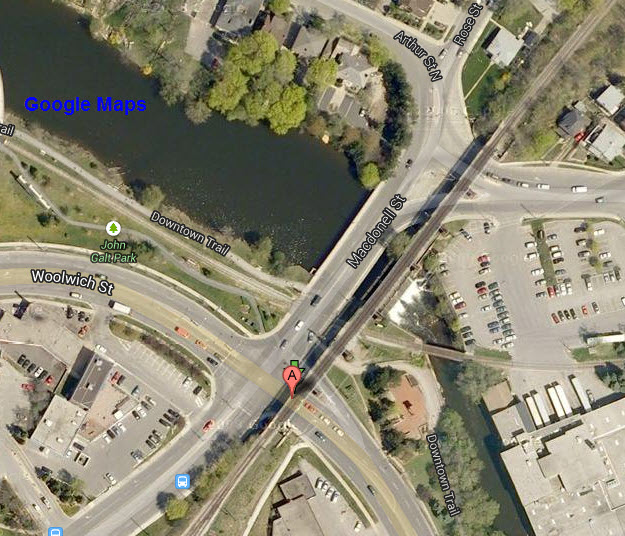
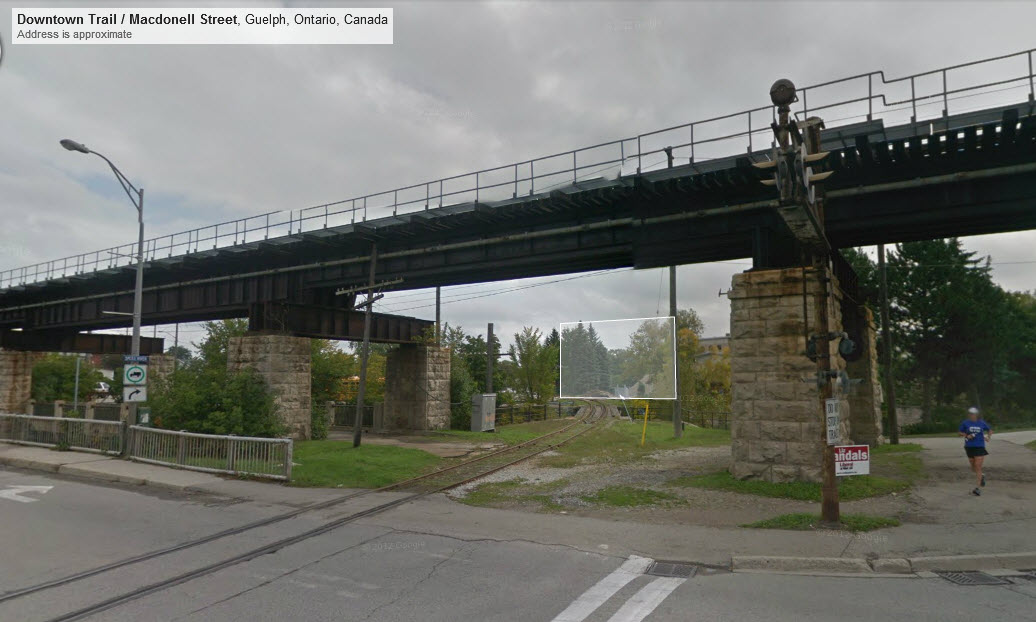
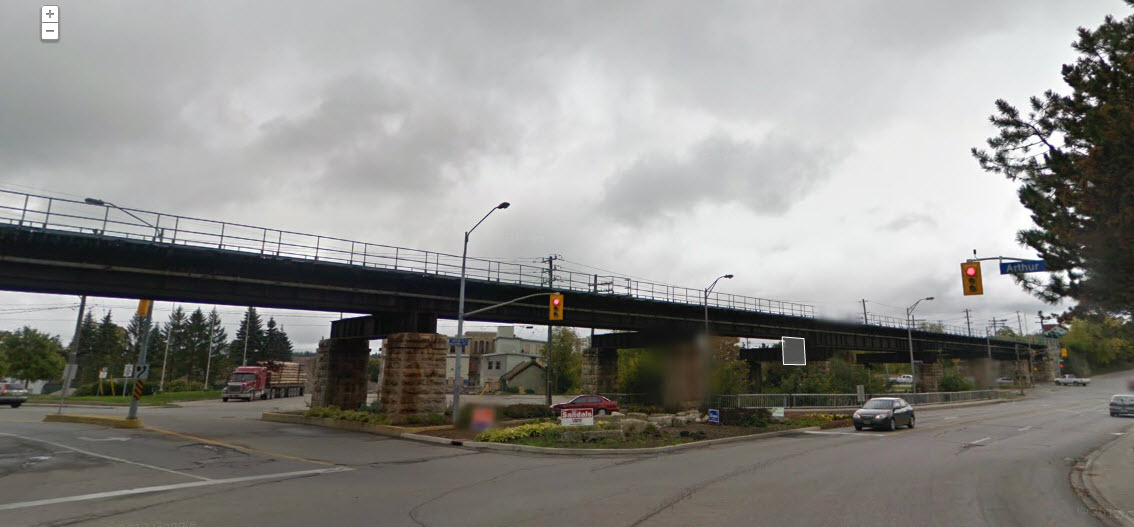
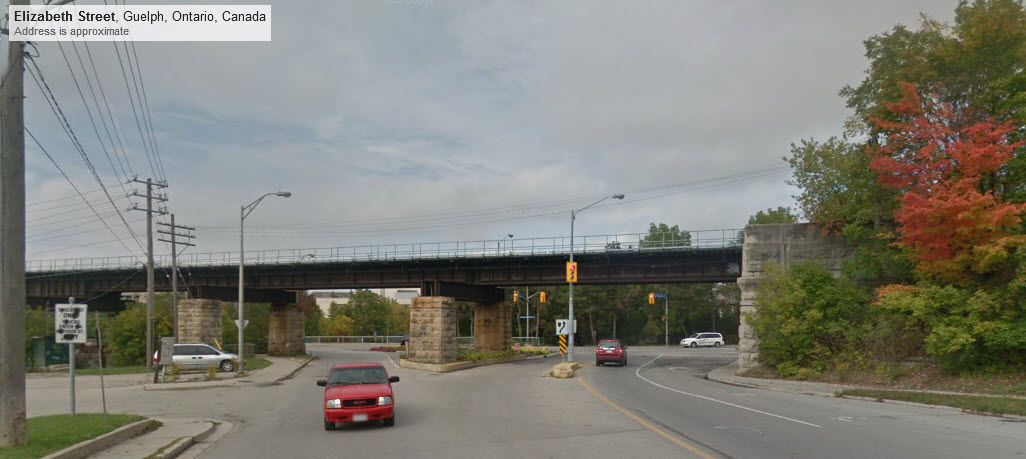
![]() the Guelph Junction Railway
the Guelph Junction Railway
The railroads homepage is here
Not sure where they keep the engine, if anyone knows, please email me.....
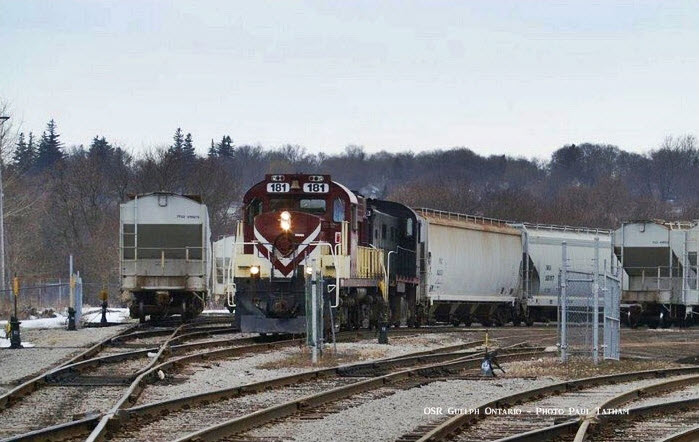
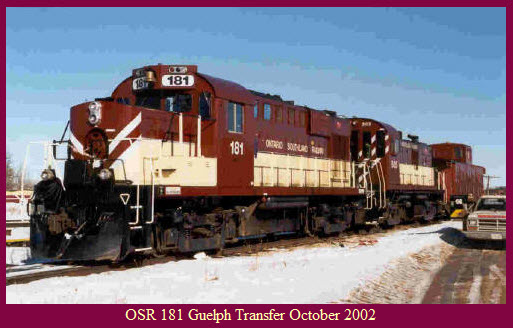

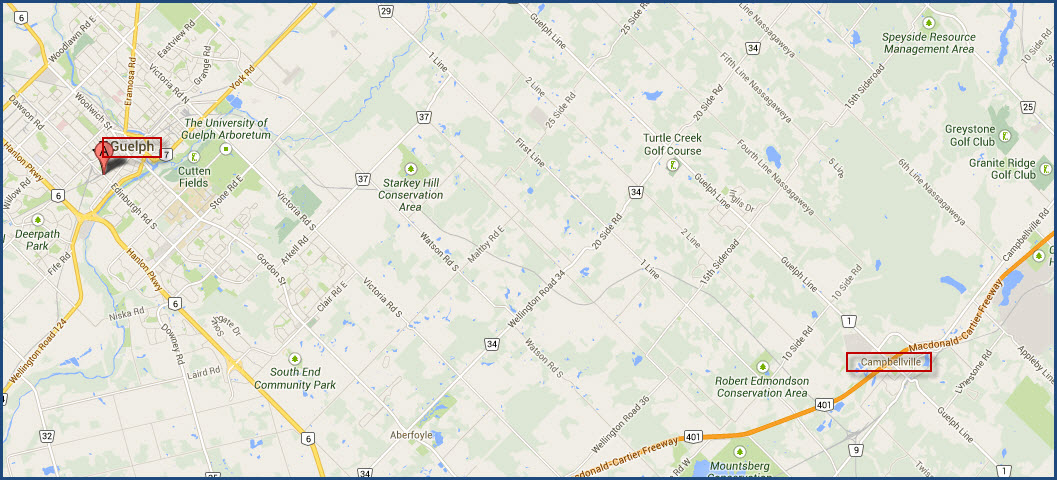
The Guelph Junction Railway is the first railway in the Commonwealth of Nations to be owned by a municipality, the city of Guelph ON. The only other is Greater Winnipeg Water District Railway.
History: The Guelph Junction Railway was created in 1885 by Guelph merchants because of the indifference of the Grand Trunk Railway which provided the only choice for their freight shipments. Competition was the only answer to high rates. Rather than operate such a small railway themselves, they leased their line to the Canadian Pacific Railway 16 mile link to Campbellville ON. Shortly afterwards, the City of Guelph bought out the merchants and took 100% ownership. It was very successful for many decades; however, with the decline in the use of passenger and freight trains, the CPR declined to renew the lease until after a century of operation.
Undeterred, the GJR decided it would continue operations. This time an independent railway operator, the Ontario Southland Railway, was contracted to take over operations beginning on January 1, 1998. Under this shortline railway method, customers are provided with equal access to both major railways which, along with good locally managed service, has increased traffic considerably.
The City of Guelph still owns it today and is unique in that it is the only municipality in Canada to have its own federally chartered railway.
Underpasses
There are several of these throughout town.
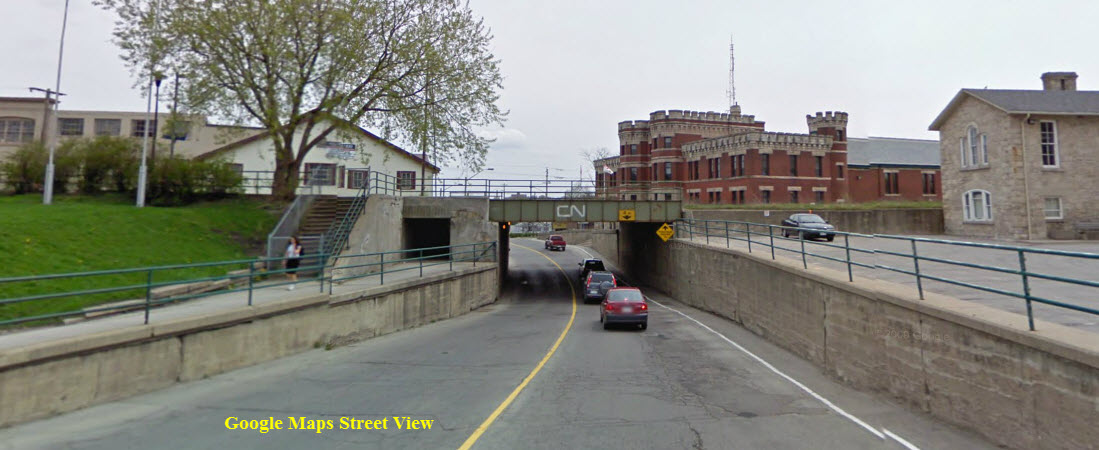
River Line
The tracks that can be seen in the above Snag, following the river.... you can get good pictures from either MacDonell St, or the parking lot on the other side of the river.
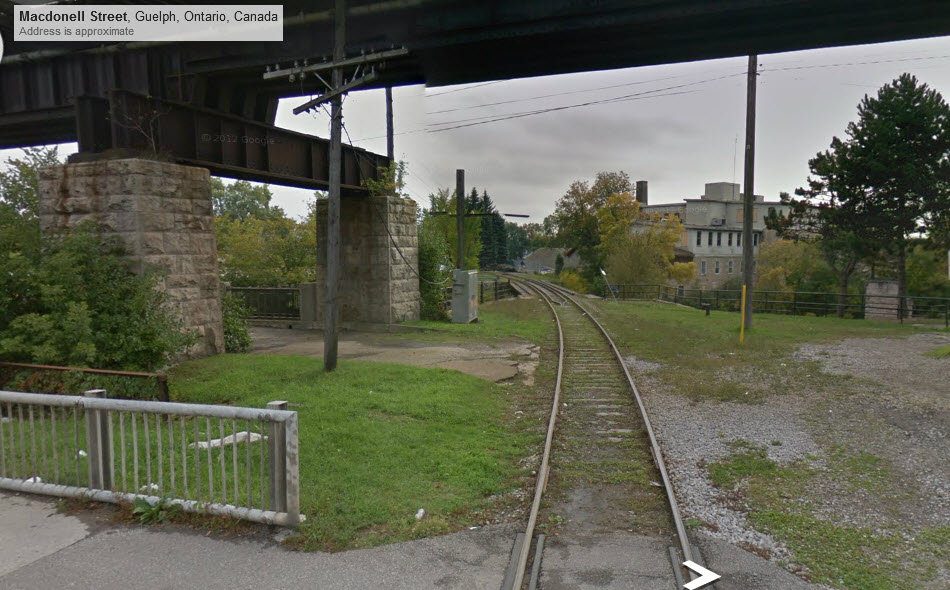
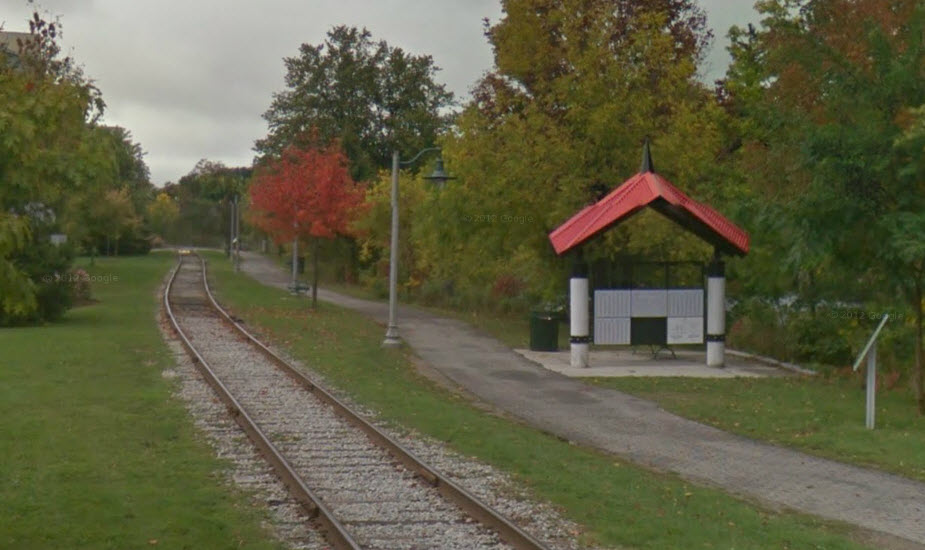
Disclaimers:
Updated 8/20/23 -- I love trains, I love signals. I am not an expert. My pages reflect what -I find- on the topic of the page, they are a collection of what you can find elsewhere. MY maps and drawings are the exception! This is something I have fun with while trying to help others. If you have helping comments, corrections, pictures, and/or information to make the page better, please, by all means, shoot me an email. Contributors are given credit unless the fame is not wanted. If you have a negative comment, I'd rather you keep it too yourself unless you are really tactful, as I have enough to do maintaining 1200+ pages :-) How many cats can you put in an empty box? Only one, because after that, the box is not empty :-)
Please Note: Since the main focus of my two websites is railroad signals, the railfan guides are oriented towards the signal fan being able to locate them. For those of you into the modeling aspect of our hobby, my indexa page has a list of almost everything railroad oriented I can think of to provide you with at least a few pictures to help you detail your pike.
If this is a railfan page, every effort has been made to make sure that the information contained on this map and in this railfan guide is correct. Once in a while, an error may creep in :-)
My philosophy: Pictures and maps are worth a thousand words, especially for railfanning. Text descriptions only get you so far, especially if you get lost or disoriented. Take along good maps.... a GPS is OK to get somewhere, but maps are still better if you get lost! I belong to AAA, which allows you to get local maps for free when you visit the local branches. ADC puts out a nice series of county maps for the Washington DC area, but their state maps do not have the railroads on them. If you can find em, I like the National Geographic map book of the U.S..... good, clear, and concise graphics, and they do a really good job of showing you where tourist type attractions are, although they too lack the railroads. Other notes about specific areas will show up on that page if known.
Aerial shots were taken from either Google or Bing Maps as noted. Screen captures are made with Snagit, a Techsmith product... a great tool if you have never used it!
By the way, floobydust is a term I picked up 30-40 years ago from a National Semiconductor data book, and means miscellaneous and/or other stuff.
Pictures and additional information is always needed if anyone feels inclined to take 'em, send 'em, and share 'em, or if you have something to add or correct.... credit is always given! Please be NICE!!! Contact info is here
Beware: If used as a source, ANYTHING from Wikipedia must be treated as being possibly inaccurate, wrong, or not true.
Please note: That my pages here and on my signal pages are mostly a collection of information you can find elsewhere. Hopefully, my pages bring all that information together on one easy to use page: What is interesting to look at, how to get there, details and history of the sights, other things a lot of railfans are into (like bridges and fire companies). Pictures of others are used with credit and the source of the pictures if known, allowed by the fact that this is a totally not-for-profit website and is used as an informative website. I you have a problem with me using one of your photos, please let me know, and I will remove it if you really don't want people to know you took such a great photo :-).
RAILFAN GUIDES HOME
RAILROAD SIGNALS HOME
NEW 11/25/2013, NOV27/2013, AUG23/28/2023
Last Modified 28-Aug-2023